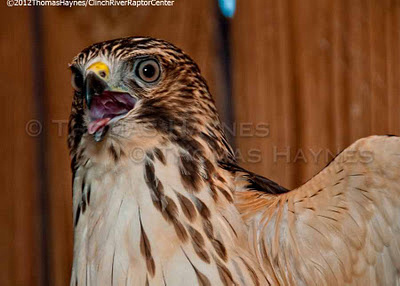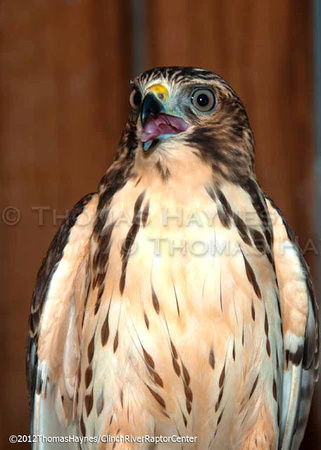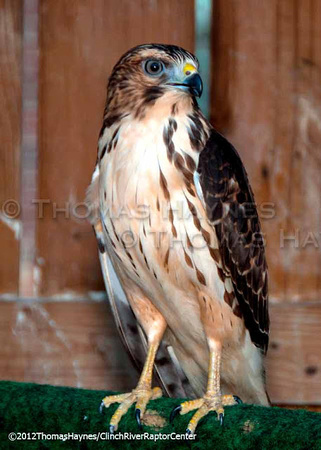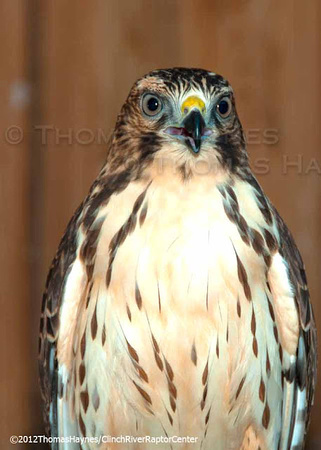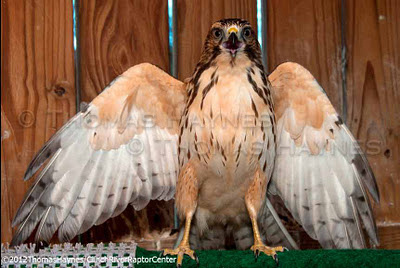BROAD-WINGED HAWK, a bird to teach a class
The Broad-Winged Hawk is one of the more plentiful hawks in the United States, a soaring hawk which is about the size of an overweight crow. These birds find it most comfortable to stay near forest areas and away from people while they spend spring and summer seasons in the eastern United States and southern Canada. When fall season arrives, the adults are ready and the babies have now grown into strong fliers, ready for migration. The time arrives to leave and all the hawks know it, no alarm clock or calendar needed. As these hawks start flying from Canada and the northern United States, they flock together and more and more companions join along the way. The migration is spectacular! In certain areas you may watch as thousands of these raptors pass by together. Like a kettle full of birds, the flying groups are called "kettles", a word for groups of raptors together. Check the Internet for photos and videos of Broad-Winged Hawk migration.
See the Migration Map at this Cornell website:
http://www.allaboutbirds.org/guide/Broad-winged_Hawk/lifehistory/ac
Where are they headed and why do they leave when fall arrives? Would you want to be where you have plenty of food? So do the hawks. They eat small critters like toads, lizards and insects. During the winter months this food is very scarce and not plentiful enough to feed the birds. The hawks take off on a trip south, to where it is summer time while we go through winter here. Can you imagine flying from the northern USA to Central America and north western South America? These hawks do it every year then come back for spring and summer here and raise their new families.
The hawks mouth and tongue is clearly visible
Amigo is a Broad-Winged hawk at the Clinch River Raptor Center. Why is he in the rehabilitation center? Unfortunately, this beautiful hawk was found with wing damage and could not fly. There is no repair possible for the wing and in the wild woods Amigo would not be able to fly and live. Still, this hawk has a chance to live a long life even if not in the wild. Once rescued, the hawk has a chance at another life. Because this Broad-Winged can help the wild birds through education of people, we see this as better than dying from starvation or being food for another animal. The real plus for Amigo is shelter, food and good care for life.
These photos are part of a Resume for Amigo. This raptor is ready to be trained as an educational bird who will travel to schools, campgrounds, club meetings and other gatherings where caretakers will teach about hawks and owls. Amigo will sit on a gloved hand and people will be able to see a beautiful little hawk up close. For the resume, selected photos and information will be sent to other raptor rehab and educational centers so that Amigo may be placed in a new home and trained for this new job.
We all wish Amigo could have been repaired and released back into the wild. If so, the hawk would have been given only a temporary name and kept as wild as possible while healing. Human interaction for releasable birds is kept to a minimum while providing essentials for healing and preparation for release. A day for release would come and we would smile as the little hawk flew away, finding a renewed life in nature where the wild critters are meant to be. Had that been the case, the hawk would still need to stay at the center and wait for spring to arrive. Do you know why? Migration time has passed and there is not food enough during the winter season.
Typical perch materials include artificial turf. Improper perch material may lead to "bumble foot", a disease of the pads of the foot bottom from injury or pressure sores followed with infection. Proper perching material is essential as is activity away from the perch when possible. Falconers, licensed rehabilitators and zoo personnel must be well aware of proper foot care for captive birds.
Note the yellow cere of the beak
____________________________________________
Make comments as you wish. E-mail if interested in more or to ask about photo purchases (without the watermark).
_____________________
I always thank God for this earth and the care He gives us in getting through it. That thanksgiving includes the creatures, large and small, beautiful or strange.
Keywords:
Raptors and Raptor Rehab
Comments
No comments posted.
Loading...
© Thomas Haynes Photoshoot

